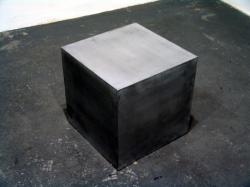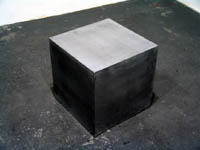

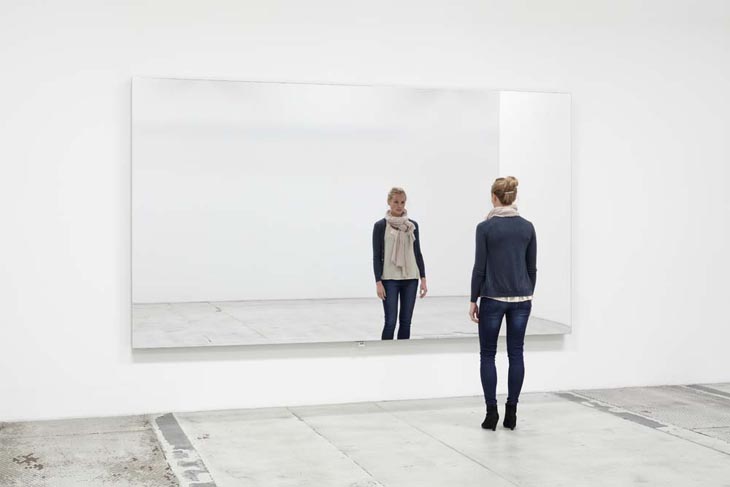
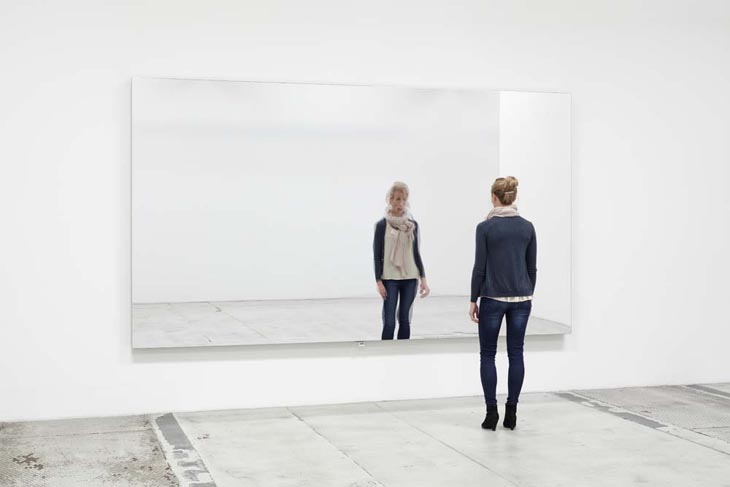
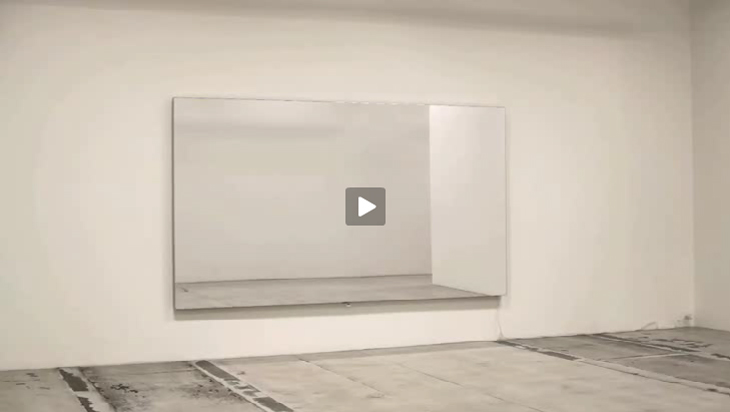
ARTIST:
Jeppe Hein
Imbuing technology with an element of surprise and humour, Jeppe Hein’s interactive works playfully remind viewers of their vital part in activating art’s communicative potential. At first glance Hein’s sculptures appear to be uncomplicated, formally simple affairs possibly nodding to 1970s conceptual art and minimalism, but something happens as they are approached: they react to human presence.
Shaking Cube (2004), an aluminium box placed directly on the floor, starts to vibrate when a visitor goes near it, stopping after a few seconds only to begin trembling again if the invisible field of motion sensors around it is entered again. We know it’s not alive, but it makes us take another look. Its sudden frantic movement and noise have a somewhat slapstick quality – think wind-up chattering teeth – but its animation is also disquieting, automaton-like, as if expressing alarm, a warning about something we cannot understand. Something similar happens when visitors get close to Mirror Wall (2010). What at first appears to be a large but straightforward mirror begins to move slightly when approached. Viewing one’s vibrating reflection in it and the accompanying distorted backdrop of the gallery space creates a sense of dizziness and a strange feeling of separation from the familiar. It prompts us instinctively to re-calibrate our spatial awareness and our relationship to what we see and where we are.
Hein’s experiential, perceptual magic tricks are his vehicle for raising engagement between art and its audience. He makes work that can only be experienced through participation, expanding our notion of what art is or could be. ‘For me, the concept of sculpture is closely linked with communication… By challenging the physical attention of the viewer, an active dialogue between artwork, surrounding and other visitors is established that lends the sculpture a social quality.’
Shaking Cube (2004), an aluminium box placed directly on the floor, starts to vibrate when a visitor goes near it, stopping after a few seconds only to begin trembling again if the invisible field of motion sensors around it is entered again. We know it’s not alive, but it makes us take another look. Its sudden frantic movement and noise have a somewhat slapstick quality – think wind-up chattering teeth – but its animation is also disquieting, automaton-like, as if expressing alarm, a warning about something we cannot understand. Something similar happens when visitors get close to Mirror Wall (2010). What at first appears to be a large but straightforward mirror begins to move slightly when approached. Viewing one’s vibrating reflection in it and the accompanying distorted backdrop of the gallery space creates a sense of dizziness and a strange feeling of separation from the familiar. It prompts us instinctively to re-calibrate our spatial awareness and our relationship to what we see and where we are.
Hein’s experiential, perceptual magic tricks are his vehicle for raising engagement between art and its audience. He makes work that can only be experienced through participation, expanding our notion of what art is or could be. ‘For me, the concept of sculpture is closely linked with communication… By challenging the physical attention of the viewer, an active dialogue between artwork, surrounding and other visitors is established that lends the sculpture a social quality.’
